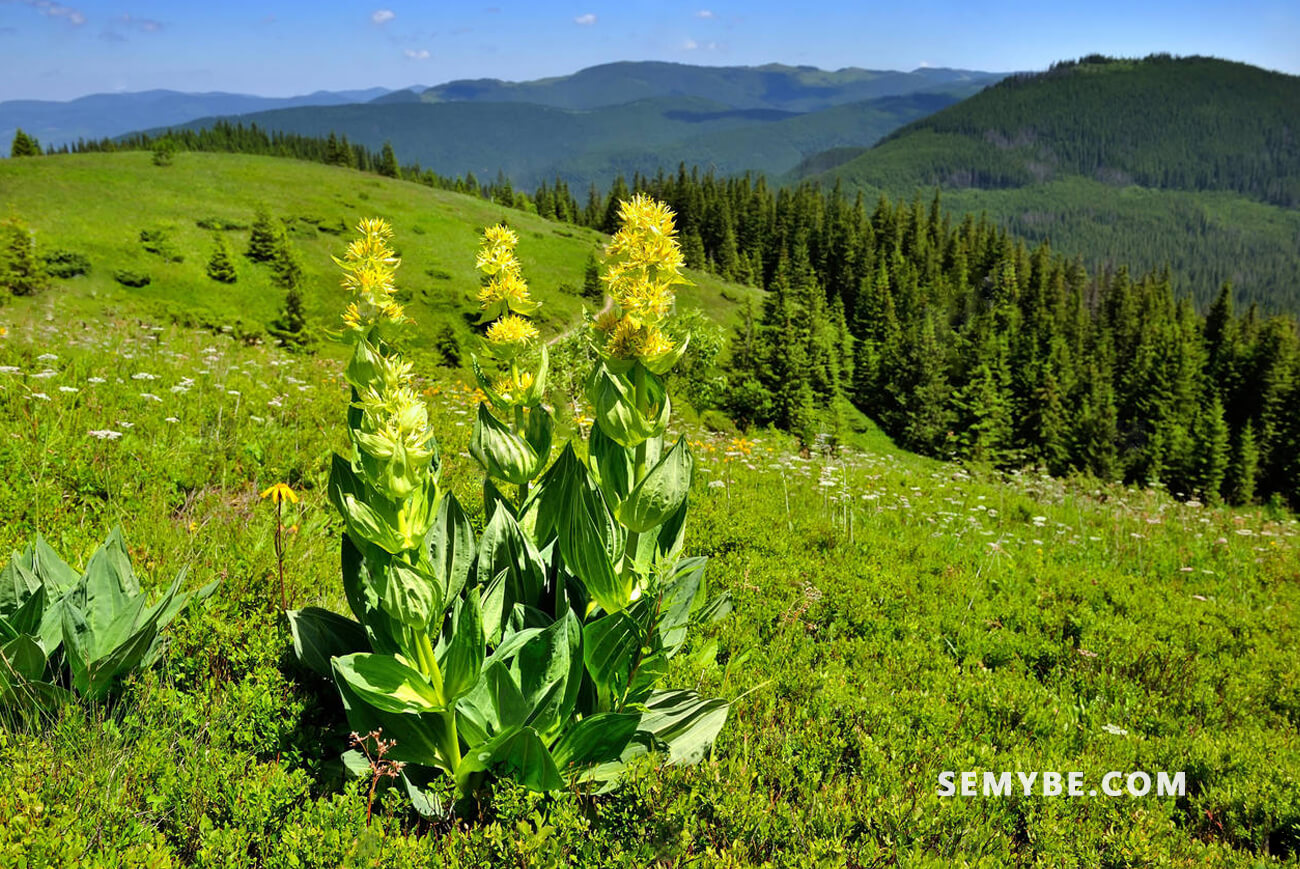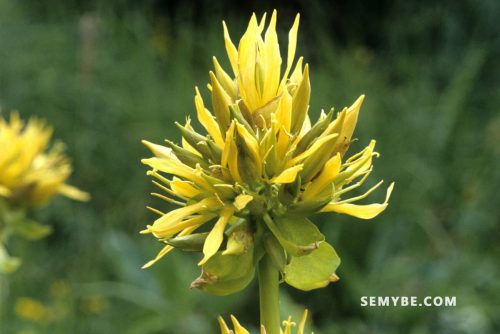
Gentiana Lutea
1. History and use
Most plants of the family Gentianaceae are native to the Alps and mountainous regions of the Iberian Peninsula and the Balkans They grow between 700 and 2400 m altitude. Yellow gentian is grown from seedlings or by division its fleshy and robust roots. Victim of its success, the wild species is threatened with extinction, it is protected in some countries.
2. Description of the plant
The yellow gentian is a plant with a strong bitter taste, which goes into the making of many traditional aperitifs. These ritual aperitifs, consumed about half an hour before mea.ls, stimulate the gastric juices and effectively prepare the stomach for digestion a heavy and hearty meal. Medically, yellow gentian fortifies a fragile or weakened digestive system.

3. Curative action
- Action of Bitter Principles
There are four taste receptors on the tongue that are sensitive to the four sweet, sour, salty and bitter flavors. It has been shown that yellow gentian stimulates the taste receptor to bitter taste, resulting in increased secretions sahvary and gastric. As a result, these effects stimulate appetite and improve the general functioning of the digestive system.
- Stimulation of the digestive functions
The stimulating action of the yellow gentian on the work of the stomach relieves many dysfunctions, such as flatulence, indigestion and lack of appetite Secretions, especially gastric, are increased, thus contributing to a better assimilation of food. The plant also stimulates liver and biliary functions. It is used in the treatment of all disorders of the digestive system. It is often present as a digestive tonic to the elderly.
Gentian has been clinically shown to be effective for many other pathologies, including anti-inflammatory action against ENT infections (tonsillitis, rhino-pharyngitis) and would an be useful against inflammatory manifestations of certain rheumatic diseases (osteoarthritis). In addition, it would be effective in the prevention of aging and maintenance of the immune system by its antioxidant effect (fight against cellular oxidation) due to the presence of flavonoids. It may also be noted that gentian may act against fever and have a regulating effect on diabetes.
4. Uses
For pathologies of the digestive system and the liver, we will first consider an infusion (or decoction) prepared with 2 g of dried root in a cup of boiling water. It should be allowed to infuse a few minutes. without overdose, take 4 to 5 cups a day, half an hour before taking any food.
Note that there are oral solutions, sold in pharmacies and prepared by pharmaceutical companies with gentian extracts often associated with other medicinal plants.
For the treatment of cutaneous pathologies (scars, inflammatory dermatoses, infected wounds, etc.), the use of gentian will be done through a repeated brushing several times a day lesions with a tincture of the plant (maceration 15 to 20 g of gentian root in one liter of alcohol at 50 °).




